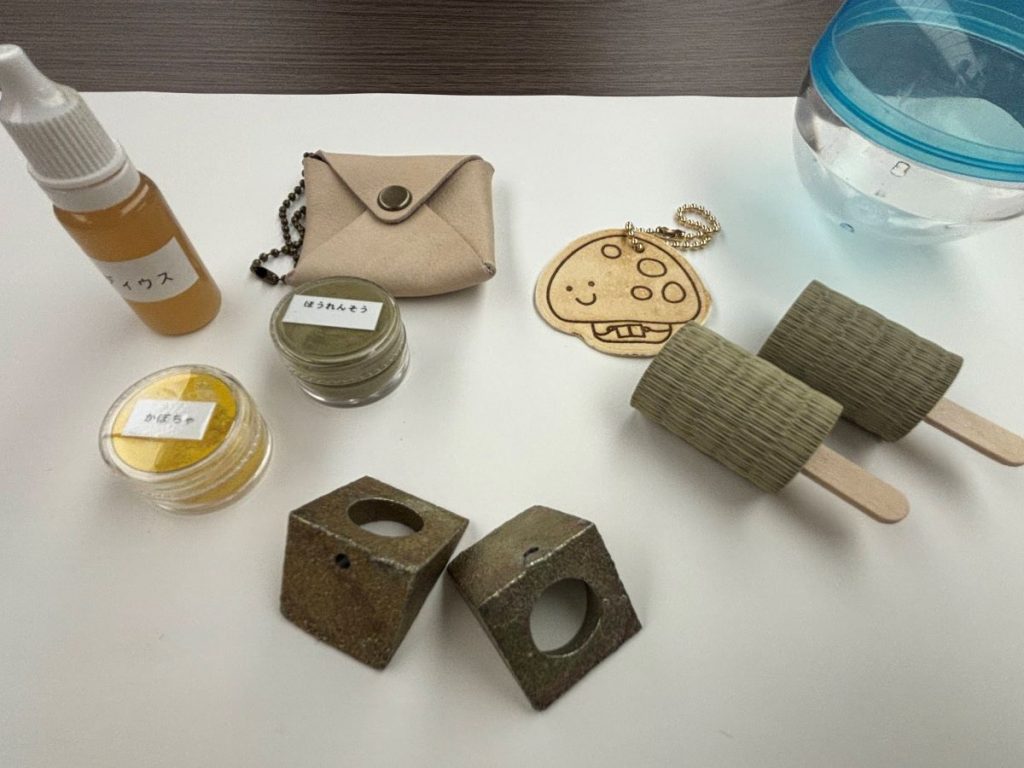
Woman spinning the industrial scrap gachapon machine installed on a trial basis in Minami Ward, Sakai City, on April 9. (©Sankei by Yusuke Kizu)
Read the full story on Japan 2 Earth - From Factory Scraps to Fun: Gachapon Capsules Get a Sustainable Makeover
Sakai City in Osaka Prefecture launched a new project using gachapon capsule machines. But these gachapon are like no other. The toys inside the capsules are made from scraps and remnants of industrial manufacturing. This initiative has found another method of upcycling – adding value to waste materials. The city aims to make the initiative a part of its efforts to promote the Sustainable Development Goals (SDGs).
Keychains and Veggie Paints
The current lineup of capsule toys includes five types. The first is a coin case made from scrap leather. Next are incense stands crafted from scraps generated in steel manufacturing. The "tatami bars" offer the fresh fragrance of scrap tatami mats, and mushroom leather keychains are made from leftover mushroom mycelium. Finally, the veggie paints are made from non-standard vegetables that were destined for disposal.

In the spring of 2023, the head of Sakai City's Tokyo Office came up with the gachapon idea. He was contemplating how to utilize industrial scraps and thought gachapon was the perfect way to appeal to children.
Continue reading the full story on Japan 2 Earth to learn where to find these gachapon machines and plans for their expansion.
And find more great articles on the environment and the challenges of achieving the SDGs on our affiliated website Japan 2 Earth (J2E), sparking a transition to a sustainable future.
RELATED:
- 'Sea Hammocks' Made from Recycled Fishing Nets Spotlight Marine Plastic Waste Issue Ahead of Expo
- Gachapon Capsule Toys: Cheap Souvenirs and a Bit of Fun
- How a Tokyo Hotel Makes Garden Planters Out of Abandoned Suitcases
(Read the article in Japanese.)
Author: Yusuke Kizu






